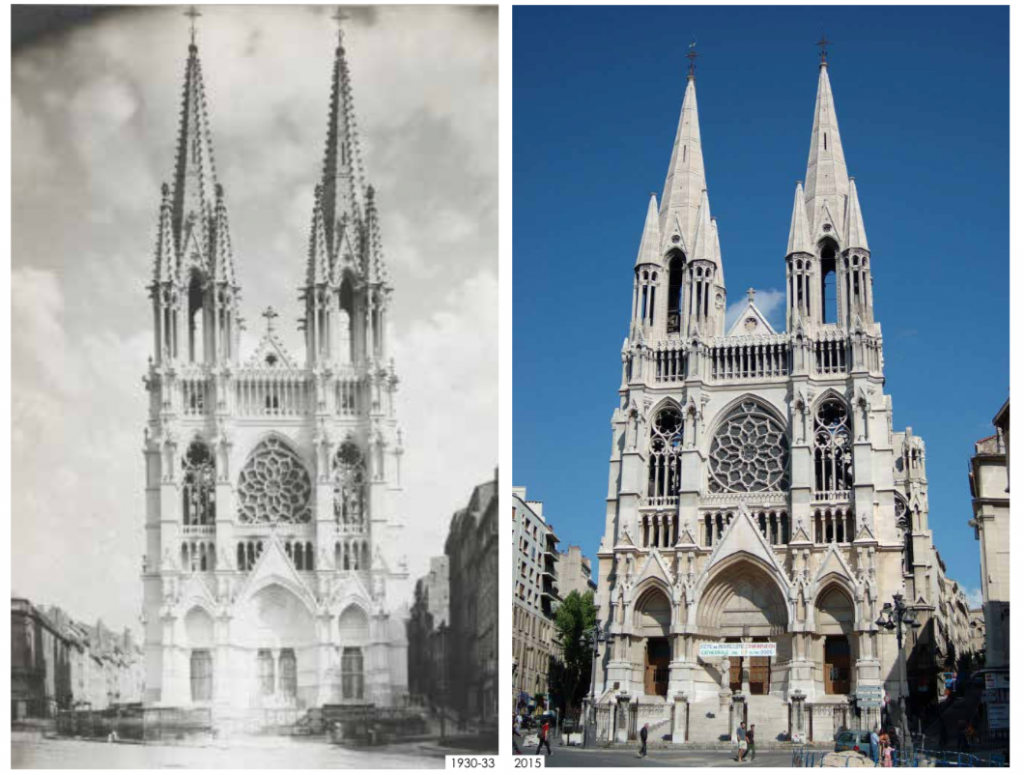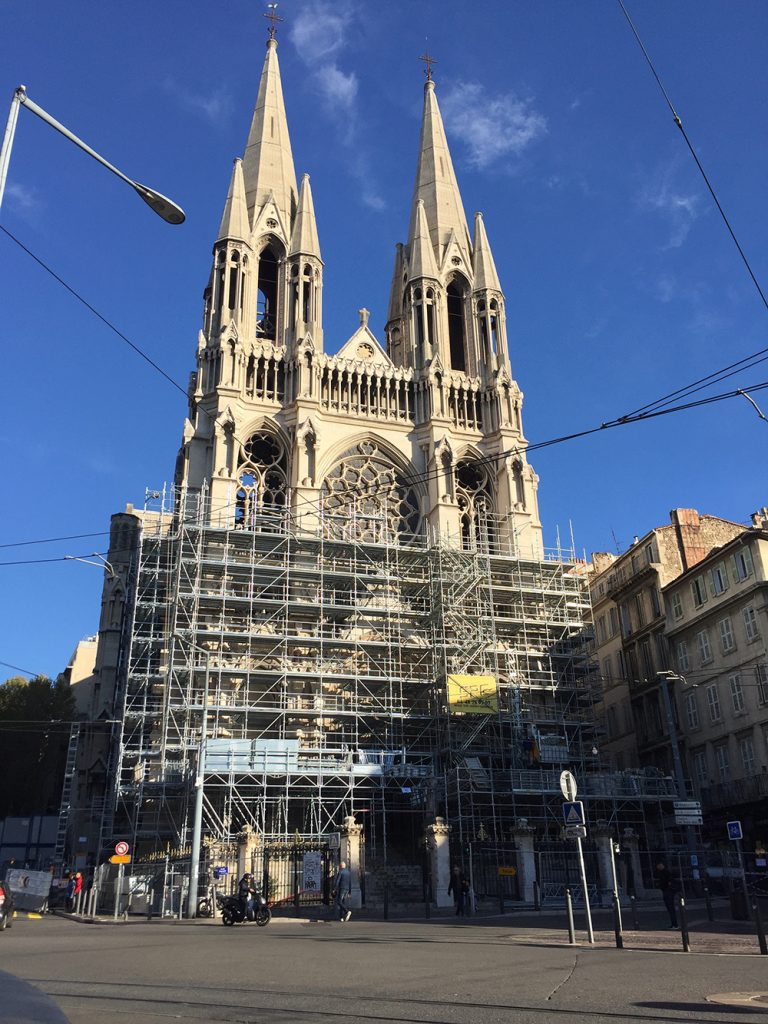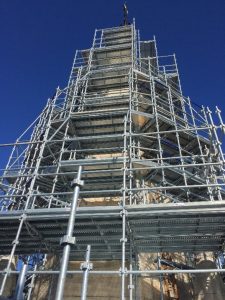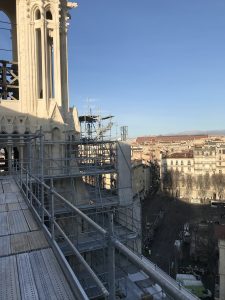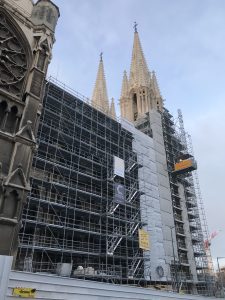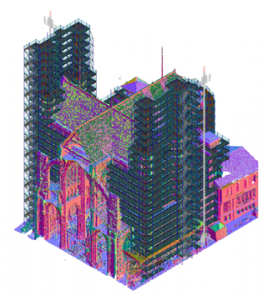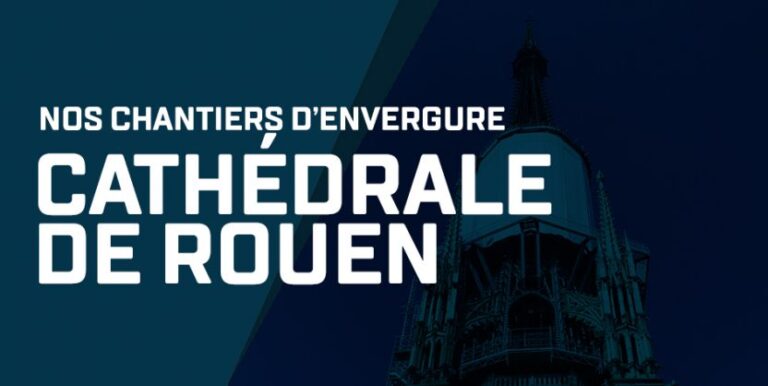- Emblematic worksite
Zoom on the renovated Marseilles building site
In 2018, we responded to a call for tender for the renovation of the Eglise des Réformés, situated at 8 cours Franklin Roosevelt, in Marseille (13). This church perched on the top of the Canebière is the most frequented church in Marseille. This church perched on the top of the Canebière is the most frequented […]
In 2018, we responded to a call for tender for the renovation of the Eglise des Réformés, situated at 8 cours Franklin Roosevelt, in Marseille (13). This church perched on the top of the Canebière is the most frequented church in Marseille. This church perched on the top of the Canebière is the most frequented church in Marseille. Now the stones are in danger of falling, the iron inside is a problem and water is seeping in: a danger that has alerted the city’s mayor. The scaffolding began being erected on 23 September 2019. Zoom on this unique project…
The Church of Saint Vincent de Paul
This church, originally called the Eglise des Réformés, is one of the most beautiful monuments in Marseille. It comes from the former chapel of the Reformed Augustinians and was built in 1611. It was later demolished and replaced by the church of Saint Vincent de Paul, built between 1852 and 1890. Some of the sculptures were never finished, especially in the entrances, where we can see many rough cuts.
This church is a listed monument in the French Historical Monument Inventory (ISMH), and its entire interior is listed as a Historical Monument (HM).
This project has several objectives: change the stones, clean the building, restore the stained glass windows, fortify the entire monument and create identical ornaments (decorations, hooks, finials and gargoyles) to those removed in 1930
The construction site
Reminder of the different phases of the work:
- Phase 1: For 14 months, the teams worked on restoring the two spires as well as the north and south booms of the west façade. These spires have been covered with a net to stop dust from propagating.
- Phase 2: Restoration work was done on the roof and the nave for 12 months between October 2020 and December 2021.
- Phase 3: The work in this final phase was on restoring the transept, the chancel and the four turrets over a period of 12 months. The work began in early 2022 and its estimated completion date is December 2022.
The chosen Tubesca-Comabi solution
The chosen solution for this project was our COMABI M368 multi-directional class 6 (600kg/m2) scaffolding, measuring one metre wide. The use of this material means that we can work on 100% of the geometric and architectural forms within the church.
About 250 tonnes of material is being used for the entirety of the works The structure has been entirely designed to facilitate access for the different trades that will be involved in the renovation.
The different assembly phases
Phase 1
The assembly phases of Part 1 were carried out in three stages: one stage was from the ground to 20m, a second from 20 to 40m and a third from 40 to 70m (spires in full reconstruction).
For the scaffolding levels and to supply materials, two site lifts were installed in each tower by the partner company SGB. They can hold up to two tonnes.
In total, the three-stage assembly took 6 weeks with 12 installers.
The dismantling of stage 1 was carried out simultaneously with the assembly of stage 2.
Phase 2
Stage 2 involved restoring the facings, the stained glass windows and the roof sides in the nave. The scaffolding was assembled in two steps:
- The first step was to restore the scaffolding on the side aisles, which enabled the restoration of the flying buttresses.
- Only after the restoration of these elements could the scaffolding be removed in order for the roofing work on the aisles to be carried out.
In total, the assembly took 12 weeks and was erected up to 26 metres high, from October 2020 to January 2021 with 5 fitters.
Phase 3
The assembly of this final stage started in October 2021 and lasted 12 weeks.
Work began in January 2022, firstly on the transept and the chancel of the church. This was followed by the reconstruction of the four turrets, starting in June.
Our scaffolding is positioned at 44 metres high (with spires) for this last phase.
The main difficulty in this phase was supplying material to the chancel, as it is adjacent to the neighbouring buildings. The fitters needed to bring the material up through a residential roof and then down into the courtyards around the chancel.
Site constraints
The main constraint of this project is the high number of visitors in this area. It is a historical place, and is therefore often visited by religious believers and tourists There is therefore very heavy car and tram traffic.
Additionally, on the north side of the building, there is a very small space for materials at ground level with a width of only 4m and a length of 20m for transferring, handling, supplying and handling materials.
On the south side, in Rue Barbaroux, there is a very different problem, with much less congestion, as this street must be kept clear at all times to ensure safe access for the fire brigade. Our teams and the SPE teams worked together for the entire assembly of the scaffolding.
On both sides, north and south, a lift was installed supply material during the dismantling phase of stage 1 and the assembly phase of stage 2. In contrast to the north side, for the south side, the lift had to be entirely removed and then re-installed at another location to allow for the supply of stage 2 and future supplies for stage 3.
Site teams
For this restoration, Tubesca-Comabi is working together as a joint and several liability consortium with the most important stone masonry companies in the Bouches du Rhône area: the Vivian company, the companions of Castellane, the Girard workshop and the sculptor Bouvier. Tubesca-Comabi acts as a co-contractor for scaffolding with SPE. For the architecture, the firm Architecture et Héritage is working on the project management part and the company Les Métiers du Bois is working on the framework and roofing.
This project is expected to be completed by the end of 2022.
The entire Tubesca-Comabi team is proud to have been working on this beautiful project in the Bouches-du-Rhône region since 2019!


